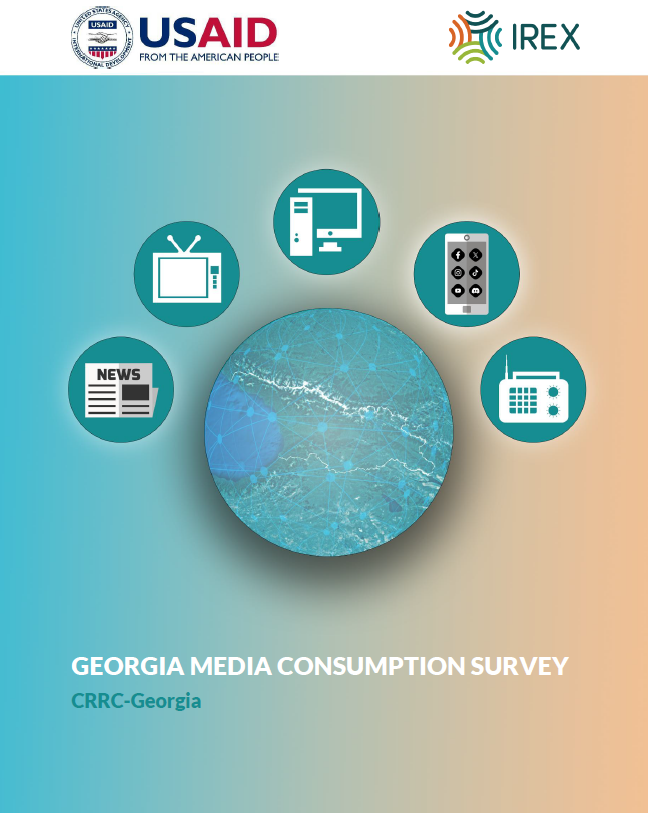[Editor’s note: This is the second in a series of blog posts co-published with On Think Tanks. The views expressed within this blog series are the authors alone, and do not represent the views of CRRC-Georgia.]
Interview by Dustin Gilbreath
Hans Gutbrod: The think tank sector is most relevant in Georgia, since Georgia is a context in which ideas are being worked out, and where there is an interest in policy solutions. Citizens have come to expect that the government delivers. So that, in principle, is a great opportunity for institutions in Georgia.
In Armenia, by contrast, policymaking is fairly closed. There are a few elite pockets of discussion, often involving the Central Bank and some other institutions, but in my view, the space for discussion is narrower. There are some bright spots, such as the Civilitas Foundation and CRRC Armenia. Both of those (and I have worked with both, to be clear) can contribute ideas, but the political system offers fewer access points.
Civilitas Foundation, interestingly, has developed into providing even more content and media, and that is a sensible approach, as it can be hard to transmit messages through traditional media that often has an insufficient institutional and financial basis for quality journalism. CRRC Armenia has been active on issues involving social protection for a long time, and has a good network and contacts in that field. Yet, overall, Armenia is punching way below its weight as a country, with only a limited effort to make it an attractive country to live, work and stay in. This limits the role of any research organization. Perhaps indicative of that situation is that even a Prime Minister whose appointment was greeted with at least some optimism, such as that of ex-Central Bank Director Tigran Sargsyan on balance delivered fairly little. When Prime Ministers can’t deliver, there’s not that much that think tanks can do.
In Azerbaijan, there isn’t any think tank scene to speak of. The government typically has tried to solve any problem by throwing money at it, and by throwing any independent voice into jail. The results are mixed, at best. Yet, ironically, an investment in think tanks might be even more important, just for that reason. Ultimately it’s possible, but unlikely, that the regime of Ilham Aliyev will last long. The most remarkable aspect about Ilham Aliyev really is how utterly incompetent his government is. They were handed huge amounts of money, and mostly blew it on themselves and a few prestige objects, instead of actually modernizing the country, its universities, and establishing alternatives to oil and gas. While the regime looks solid now, it has so little management capacity that it could unravel quite quickly in a crisis.
The key question is what alternatives will then be available. Given that there is no opposition to speak of, who can be ready to run things? You need to train people who understand the policy issues so that they can deliver results within the first six months of taking over. If you do that, a post-Aliyev government has a good chance. Conversely, if there is no viable alternative things could turn grim quickly, as Libya illustrates. I know this sounds far out right now, but it’s important to hedge against downside risks, and thus policy research would be a good investment.
Coming back to Georgia, policy research organizations haven’t really caught up with the new realities. The previous Saakashvili government was brimming with ideas. Some of these ideas were harebrained, but others also proved remarkably successful and even visionary. With the government hatching so many ideas, research organizations often struggled to keep up and had limited opportunities to contribute new suggestions.
This has now changed. Most people agree that the current government is much more receptive to outside input and ideas, partially because they produce fewer of their own. Yet we don’t see that much input from research outfits. Many policy research organizations, have settled into a comfortable routine of criticizing the government, along with the society. That’s understandable, but there is a missed opportunity of bringing in new ideas. Take one example: when the mayor of Tbilisi promised to plant 1 million trees, this would have offered an extraordinary opportunity. Research organizations could have jumped at this issue, coming up with ideas on how to plant these trees, talking about urban planning, reviving parks, greening the city, bringing in excellent ideas that worked elsewhere. Here and there this may have happened, but I haven’t really seen a sophisticated paper by anyone that advanced the discussion.
So what’s the biggest missing ingredient, for policy research organizations to succeed? In my view, it’s curiosity. I myself have been to many events which are interesting, engaging, and where new ideas are being discussed. It’s regrettable that often not a single policy researcher is there, even if the event happens close to their office. Improving ideas doesn’t happen in isolation. It’s a result of intense discussion. It also often requires sifting through lots of less relevant material. Of course, I understand that all these organizations have many other things to do: other projects, administration, other obligations.
Yet research outfits aspiring to be think tanks do need to ask themselves whether at the end of the day they really are passionate about policy. If you have not read Nudge, what are you doing at the table of a policy discussion? I know this is an extreme view, but I do think it needs to be brought into the discussion.
To be a good lawyer, to be a good practitioner, to be a good policy professional – for all of that you need to keep up with what’s happening in the field, you need to connect with the community you work in. I wouldn’t want my heart to be operated on by someone who is fumbling along, without having checked in with what’s happened in the field in the last 20 years. Why should we demand less from think tanks? In the most extreme case, they’re involved in open-heart surgery of entire societies.
Donors, too, should be discriminating in that regard, and hold local research organizations to a much higher bar. Asking for more transparency is just one of those aspects -not sufficient, but certainly necessary. We all need to ask more, to get better results, better policy proposals, and ultimately, better policies.
Ultimately I’m fairly optimistic that this can succeed, though think tanks may be dragged into the future rather than leading into it, and existing institutions may be sidelined. The playing field is now better for those that are agile. Ray Struyk has put forward a great book on how to manage think tanks, and this can help ambitious institutions get it right, if they take the materials seriously.
Another reason, to end on a plug for something that I put together, is that now journalists and ordinary citizens no longer need to take anything on faith. They have access to some of the best think tank research through tools such as www.findpolicy.org. So new ideas may come in, though not necessarily from formalized organizations.
The key challenge for all of us is how to accelerate a better understanding of policy. The best think tanks should be ahead of this process, not behind.
DG: In Azerbaijan, given the recent crackdown and shuttering of organizations which could provide just the training you mentioned, where are there (if there are) opportunities to invest in think tanks either from the side of donors or domestically?
HG: I think in Azerbaijan, the key is to invest in organizations that may work on the outside, that help to clarify what really is going on, that use innovative tools, that collect data that highlights how official data just isn’t right. In a way this would be a research outfit that could feed into discussions via social media, a kind of research version of the original version of Radio Free Europe. I know that this is difficult, but you really need to invest into thinking precisely when times are particularly difficult. The case for such external research organizations has also been made by Emin Milli, a dissident who spent significant time in jail for daring to speak up.
DG: You noted here as you have noted elsewhere that donors need to push for higher quality research outputs from local organizations. Do you have any concrete recommendations of how to do so?
Well, there are many measures, and not so many have been tried. I would hope that donors engage substantially with this question. Here are some key measures that come to mind.
- Finance: there should be more core financing to start with. Many research organizations are totally projectized, and this makes it harder for them to invest into quality.
- Nudging: at the point of application, ask about quality assurance mechanisms. Some key questions could include what are you actually doing, with whom, how? Can you put this on to your website, to indicate your commitment to such quality assurance? That would be a good start.
- Checklists: use and encourage the use of checklists. For example, does a policy proposal include a budget? Or is it just a wishlist?
- Comparison: encourage and finance small public reviews and comparisons. For example, does an organization make its old reports accessible, or does it lose all materials when updating a website? Unfortunately the latter still happens way too often, and is a great loss. Many organizations barely think of that, and knowing that you will be reviewed could encourage more attention on that issue.
- Network: create access to constructive external peer review. You could potentially encourage the formation of a network of quality review. This would be an experiment, but if it works it could have a transformative impact.
- Transparency: there are many reasons for transparency, but an additional one is that having full financial information on a grantee website helps donor coordination. Donors should not just be transparent themselves, their quality can also be measured by the transparency of their grantees.
DG: Any final thoughts?
HG: Yes. Ultimately, the really interesting things often are outside the disciplinary mainstream. I cannot recommend Ed Catmull’s book Creativity, Inc. highly enough. He describes how Pixar works, and how they consistently managed to turn out successful films. This book holds many lessons for creative organizations, and think tanks should be at least somewhat creative, and in the end also tell a compelling story.












